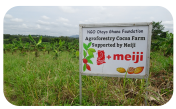
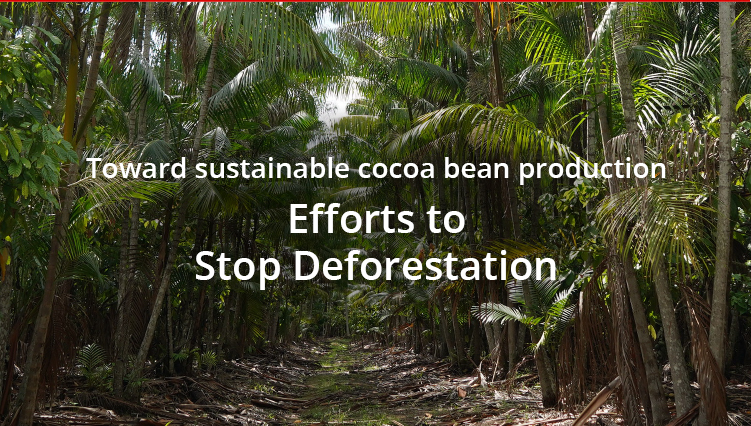
-
Preserve the rich nature.
What we can do now to stop deforestation. -
Deforestation has become a social issue due to the expansion of cocoa farms in response to the growing demand for chocolate.
Aiming to balance cocoa production with the richness of nature.
We are involved in a variety of initiatives, including education related to forest protection and restoration, distribution of seedlings, and promotion of agroforestry.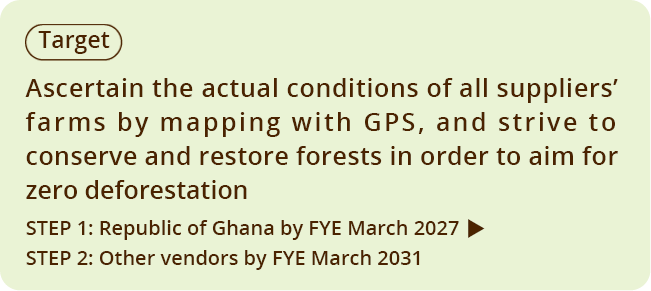

Actions taken in cocoa producing areas
Verification of deforestation
We collaborate with local partners to monitor the farms of our suppliers and ensure that they are not interfering with protected forest areas through mapping and on-site inspections.
Walking along the farm boundary with a smartphone and mapping it with GPS to identify the boundary between the farm and the protected forest areas and check the farm area not interfering with the protected forest areas.
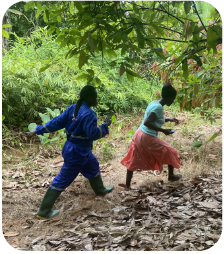
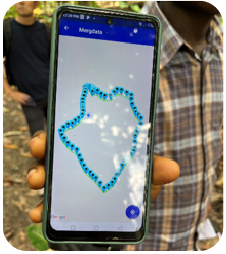
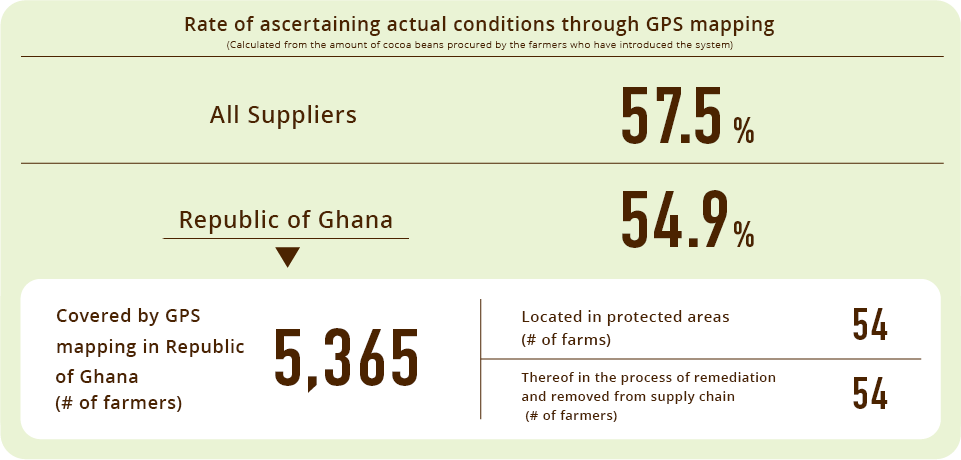
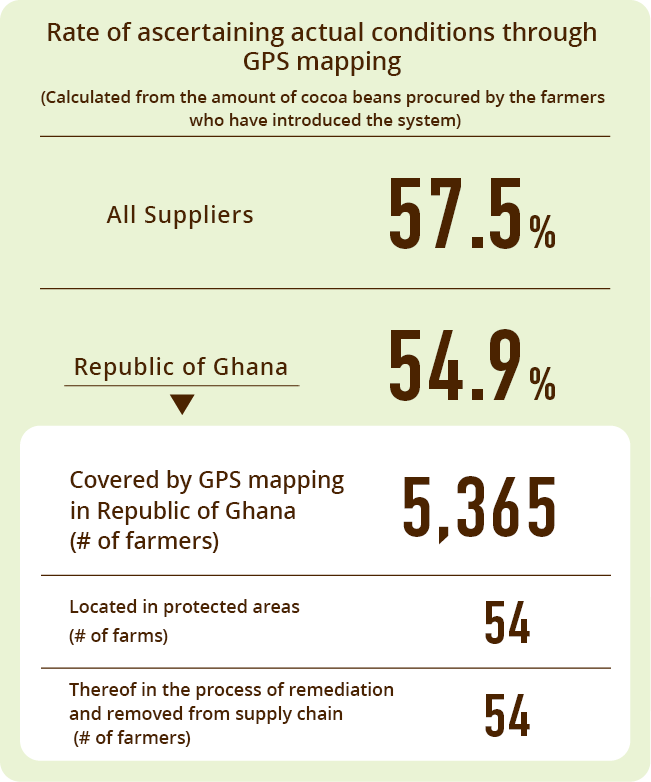
Forest education
We provide farmers with Climate Smart Cocoa Training (information on deforestation and restoration of natural environmental systems) and Good Agricultural Practice [GAP] training (sustainable agriculture initiatives) to stop deforestation on cocoa farms. We are working to stop deforestation related to cocoa farms.
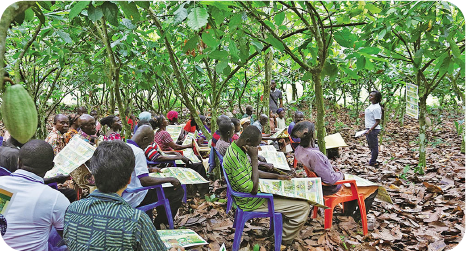


Forest Conservation
We distribute various types of seedlings to maintain and restore the forest environment and ecosystem of the cocoa farms and surrounding areas.
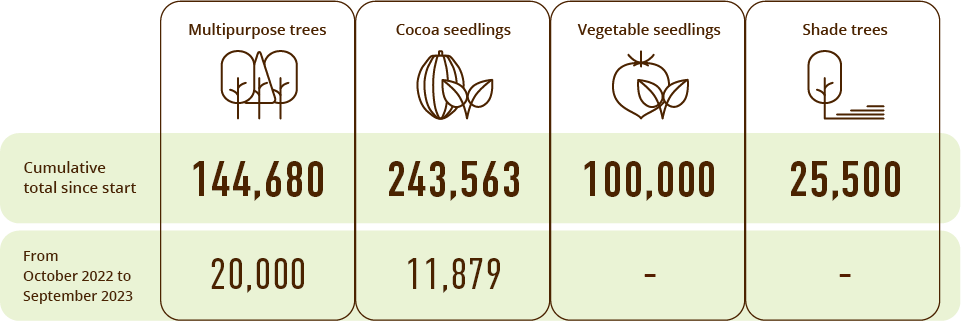
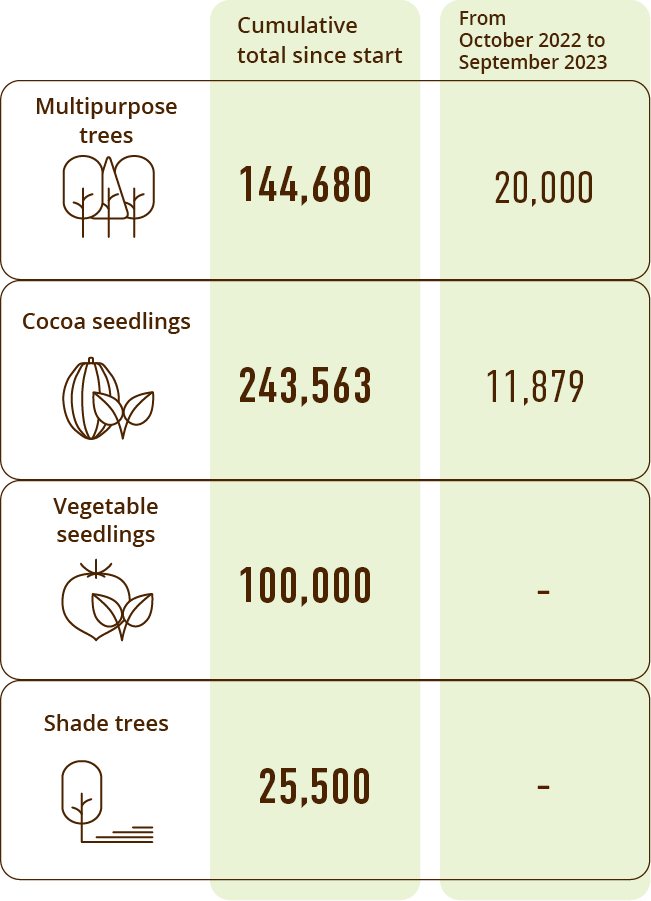
Toward the coexistence of cocoa and forests,
Promoting "Agroforestry" , an agriculture that creates forests
The production of cocoa causes serious social issues of natural environment destruction and loss of biodiversity through deforestation.
Since 2009, Meiji has been working on "agroforestry," which is attracting attention as a solution to these issues.
What Is "Agroforestry"?
A term coined by combining the words "agriculture" and "forestry," it is an agricultural method in which multiple agricultural and forestry products are cultivated in symbiosis on the land after deforestation.
For example, planting bananas and pepper along with cocoa seedlings can minimize damage to nature while maintaining the forest ecosystem.


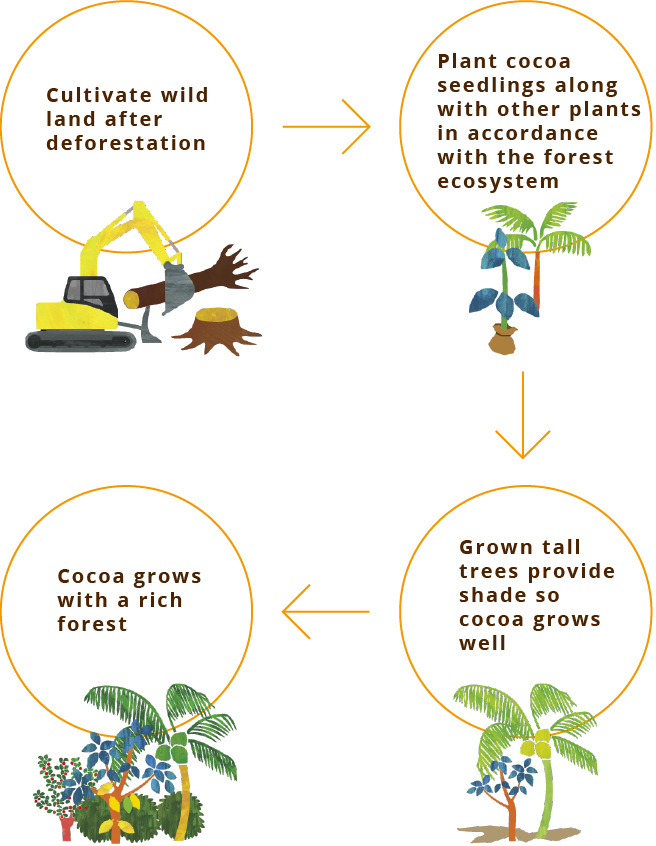

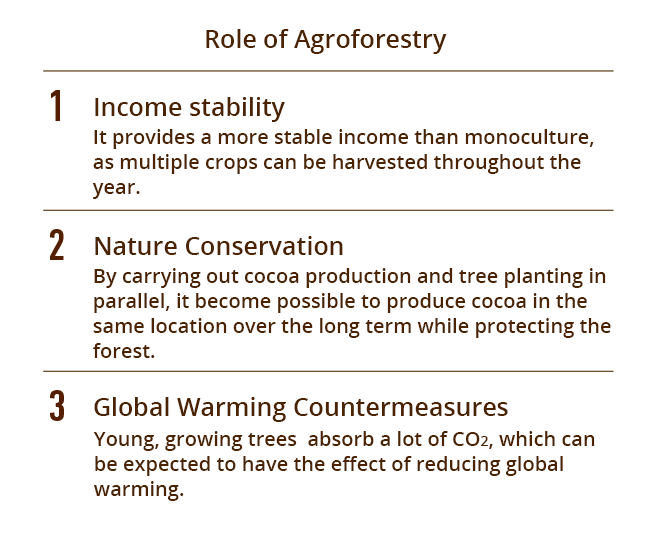
-

- Since 2009, we have been working on agroforestry with cocoa farmers in Tomé-Açu, Brazil, with whom we are collaborating quality research on cocoa beans.
- Along with cocoa, we grow a combination of several crops, such as bananas, peppers, passion fruit, and acai.
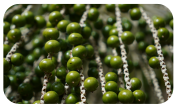
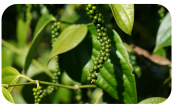
-

- In 2020, we began supporting a pilot farm with the Ghanaian government-accredited NGO, Ohayo Ghana Foundation, and are continuing trial and error in crops and cultivation methods.
- Along with cocoa, bananas, plantains, and cassava are also grown.
-
〈Meiji Agroforestry Milk Chocolate〉
Fruity aroma and roasty and rich flavor that match with milk

-
〈Green Cacao〉
[For Business use] Sweet chocolate with 62% cocoa content
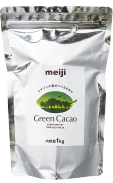
The cocoa beans produced through agroforestry in Tomé-Açu, Brazil are used in the cocoa mass.
We support sustainable farming methods and help farmers to have a stable livelihood.
Participating in Cocoa & Forests Initiative, a global
partnership aimed at protecting and restoring forests
The Cocoa & Forests Initiative (CFI) is a partnership aimed at eliminating deforestation associated with expanding cocoa plantations and protecting and restoring forests. It was established in 2017 in cooperation with the World Cocoa Foundation and other organizations.
The CFI comprises 33 cocoa and chocolate related companies (including Meiji), which account for about 85% of the world's cocoa trade, and the governments of Cote d'Ivoire and Ghana, the largest cocoa producers.
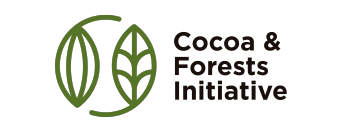
Working to stop deforestation in the cocoa sector.
CFI member companies, including Meiji, have completed their activities from 2019-2022 and are now working based on each company's newly formulated plan until 2025.
We have narrowed down our focus to three areas and are promoting activities to stop deforestation.



We have supported in sustainable agricultural intensification to “Growing more Cocoa on less land” with focused on.
-
Providing 5,117 farmers with technical assistance to professionalize & optimize cocoa farming practice.
4,626 farmers received technical assistance to be more resilient to climate change and reduce and remove carbon emissions on farm such as Climate Smart Cocoa. -
Supporting 691 farmers to adopt and expand agroforestry.
As a result, 1,011 hectares of new agroforestry farms have been started. -
Distributing of 20,000 trees for off-farm planting and 11,879 multi-purpose trees for on-farm planting.
-
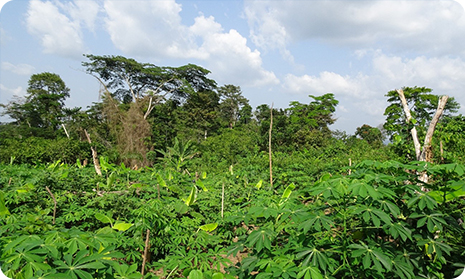
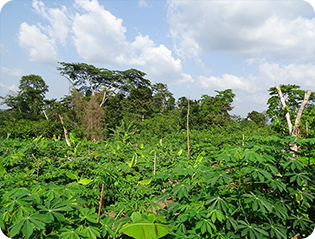
Agroforestry Farm

The project focused on the following three programs in 168 communities in seven regions in Ghana, with the aim of "Growing more Cocoa on less land."
-
In addition to surveying and registering (mapping) the status of 5,068 farms, we promoted agroforestry at 1,032 farms.
-
Training including agroforestry and GAP was conducted for 3,883 farmers.
-
A total of 17,000 shade tree seedlings were distributed to cocoa farms.
-
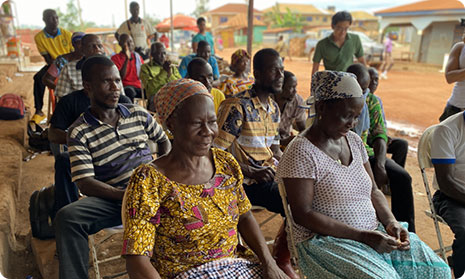
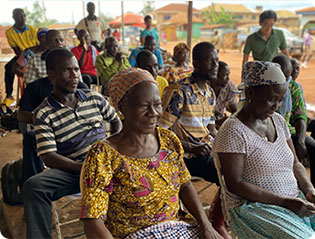
Training session on cocoa cultivation for farmers
-
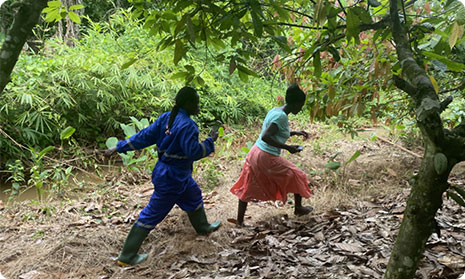
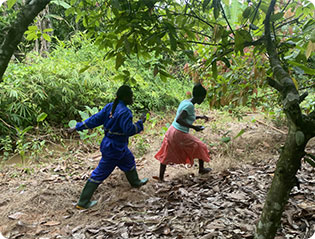
Walking along the farm boundaries with a smartphone and mapping it with GPS

We worked in 87 communities in four regions across Ghana.
-
We provided guidance to 3447 farmers on Good Agricultural Practices (GAPs).
-
We distributed 127,926 cocoa seedlings to help regenerate the farm.
-
We planted 10,000 multi-purpose trees on cocoa farm and 2,000 trees outside the farm.
-
We established the Nursery for cocoa seedlings.
-
We donated wells to two villages for raising seedlings, cocoa farming and daily life.
-
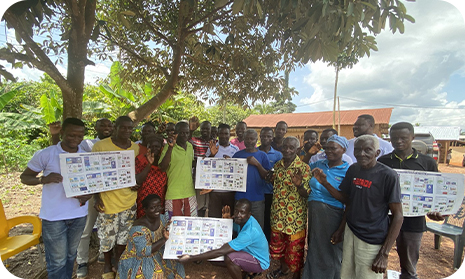
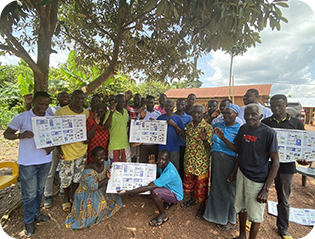
Farmers in training classes
-
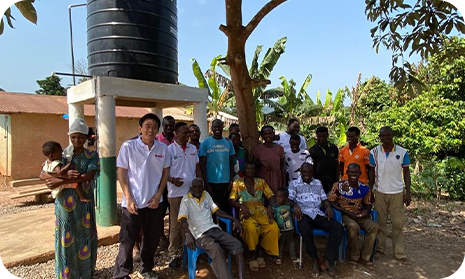
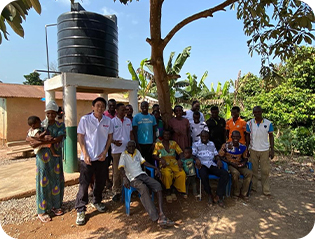
Donated wells

-
We provided guidance to 191 farmers outside the reserve areas on cocoa production adaptable to climate change, including Good Agricultural Practices (GAPs).
-
We established a highly productive cocoa seedlingcenter.
-
We distributed 3525 productive seedlings to farmers.
-
We built wells in five villages to provide water for growing seedlings, cocoa farming and daily life.
-
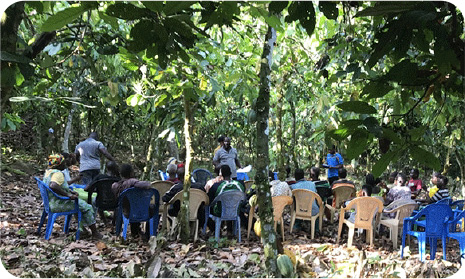
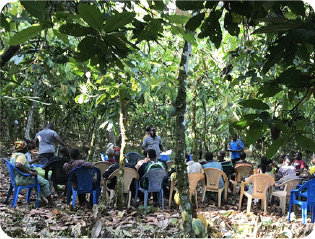
Training on a cocoa farm
-
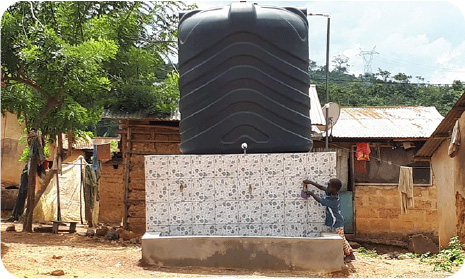
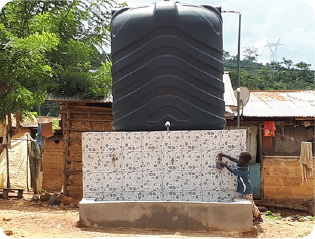
Built a well with a water storage tank

-
We provided guidance on Good Agricultural Practices (GAPs) to 2548 farmers.
-
We distributed 112,860 seedlings to restore the forest through agroforestry farming.
-
We set up 10 cocoa seedling centers to grow seedlings of highly productive varieties and distributed 71,933 to farmers.
-
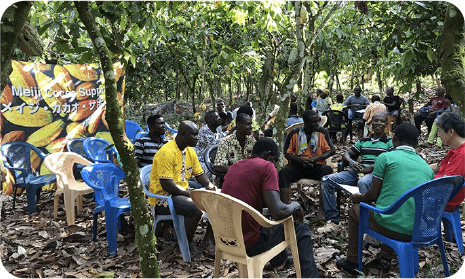
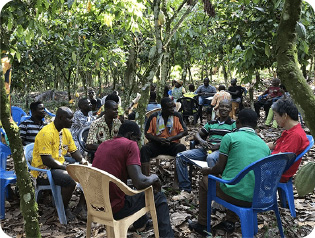
Training School
-
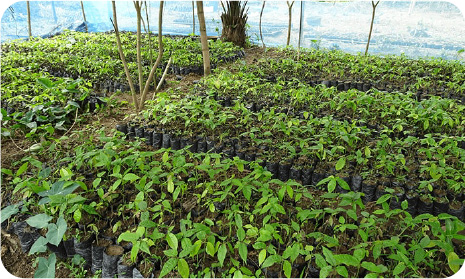
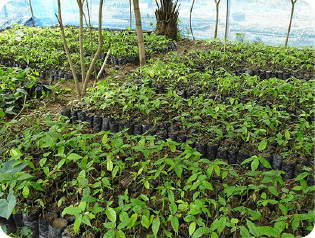
Seedling Center








